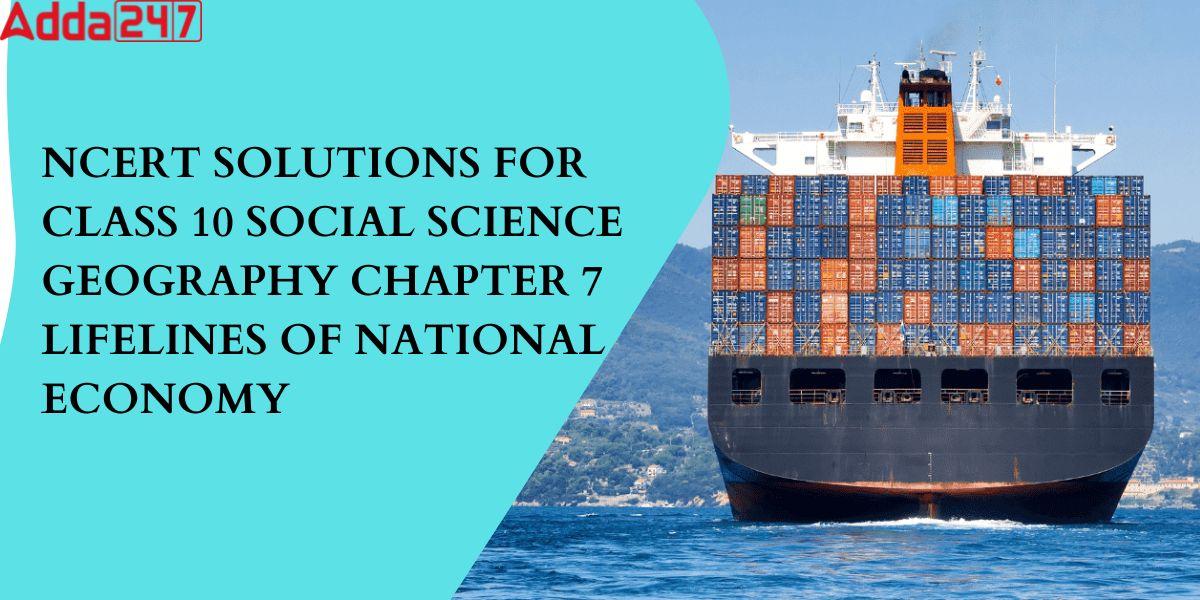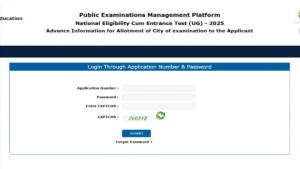Table of Contents
NCERT Solutions for Class 10 SST Geography Chapter 7 Lifelines of National Economy- Introduction
NCERT Solutions for Class 10 SST Geography Chapter 7 Lifelines of National Economy is given in the article.NCERT Solutions Class 10 is the best resource for obtaining a good score in the class 10 board Examination. The NCERT Solutions will aid your preparation for the CBSE examinations for Class 10 Geography Chapter 7 Lifelines of National Economy. Here are Adda247 Expert faculty team prepared NCERT Solutions for Class 10 SST Geography Chapter 7 Lifelines of National Economy along with in-text questions and exercises of that chapter for a better grasp of the topics. These solutions will help you understand the concepts covered in the chapter completely. So that students can pass their board exams with good scores. Keep learning with Adda247.
NCERT Solutions for Class 10 Social Science Geography Chapter 7 Lifelines of National Economy: Topics
Let’s quickly review the subjects and subtopics covered in Class 10 SST Geography Chapter 7 Lifelines of National Economy.
1. Transport
- Railways
- Pipelines
- Waterways
- Airways
2. Important Seaports
3. Communication
4. International Trade
5. Tourism as a trade
NCERT Solutions for Class 10 Social Science Geography Chapter 7 Lifelines of National Economy: Video Explanation
NCERT Solutions for Class 10 SST Geography Chapter 7 Lifelines of National Economy Pdf
NCERT Solutions for Class 10 Geography Chapter 7 Lifelines of National Economy are given in pdf format so that students can easily download it for future use. Click here to download
NCERT Solutions for Class 10 SST Geography Chapter 7 Lifelines of National Economy Question Answer
NCERT Solutions for Class 10 Social Science Geography Chapter 7 Lifelines of National Economy Question Answer
1 . Multiple choice questions.
(i) Which two of the following extreme locations are connected by the EastWest corridor?
(a) Mumbai and Nagpur (b) Silchar and Porbandar (c) Mumbai and Kolkata (d) Nagpur and Siligudi
Ans:(b) Silchar and Porbandar
(ii) Which mode of transportation reduces trans-shipment losses and delays?
(a) Railways (b) Roadways (c) Pipeline (d) Waterways
Ans: (c) Pipeline
(iii) Which one of the following states is not connected with the H.V.J. pipeline?
(a) Madhya Pradesh (b) Maharashtra (c) Gujarat (d) Uttar Pradesh
Ans: (b) Maharashtra
(iv) Which one of the following ports is the deepest land-locked and wellprotected port along the east coast?
(a) Chennai (b) Paradwip (c) Tuticorin (d) Vishakhapatnam
Ans: (d) Vishakhapatnam
(v) Which one of the following is the most important modes of transportation in India?
(a) Pipeline (b) Railways (c) Roadways (d) Airways
Ans: (b) Railways
(vi) Which one of the following terms is used to describe trade between two or
more countries?
(a) Internal trade (b) International trade (c) External trade (d) Local trade
Ans: (b) International trade
2 . Answer the following questions in about 30 words.
(i) State any three merits of roadways.
Ans: The three merits of roadways are
- Compared to railroad lines, roads are far less expensive to build, and they also require less money and effort to maintain.
- When moving a small number of people and a relatively small volume of products over short distances, road transportation is cost-effective. Door-to-door service is offered by roads.
- Roads can penetrate mountains like the Himalayas because they can withstand slopes with higher slopes. Comparatively more complex and uneven geography can be traveled by roads.
(ii) Where and why is a rail transport the most convenient means of transportation?
Rail transportation is the most convenient mode of transportation. In the northern plains, where there are level expanses of land with dense populations and abundant agricultural resources. Rail transport can move more people and products across vast distances for a reasonable price. Railways are thus the most convenient mode of transportation in India’s vast northern plains.
(iii) What is the significance of the border roads?
The border Roads play a vital role in India’s economy as well as security. The significance of the border roads are
- Border Roads have had a significant impact on these regions’ economic growth.
- Border Roads are an essential road connection along our country’s borders.
- These highways are crucial in terms of strategy and External security threats.
- These roads have increased accessibility in mountain ranges areas, particularly along the northern and northeastern borders.
(iv) What is meant by trade? What is the difference between international and local trade?
A simple definition of Trade is the purchasing and selling of products. Manufacturers sell their products to traders, who then purchase them and resell them to consumers. A trader essentially acts as a middleman between consumers and producers.
| Difference between international and local trade | |
| International Trade | Local Trade |
| International Trade. when two countries engage in trade. | Local trade, which has no bearing on the value of the national currency, occurs when goods are exchanged between states, cities, or villages. |
| International trade is mainly composed of imports and export. | Local trade includes both sale and purchasing. |
| It could occur via land, sea, or air routes. | Railroads and roadways are the primary modes of local trade. |
| Foreign currency is earned through international trade. | Although it does not generate foreign exchange, it aids in meeting peoples’ necessities. |
3 . Answer the following questions in about 120 words.
(i) Why are the means of transportation and communication called the lifelines of a nation and its economy?
(ii) Write a note on the changing nature of international trade in the last fifteen years.
The term “international trade” refers to trading between nations. In the past fifteen years, there has been a significant change in international trade. Over the past 15 years, there have been significant developments in international commerce. The interchange of information and knowledge has surpassed and supplemented the exchange of goods and commodities. India has become a global software powerhouse and generates significant foreign exchange revenue from the export of information technology goods. The exchange of information and knowledge has supplanted the exchange of products and commodities. To facilitate trade between the two nations, bilateral agreements were created.
However, efforts have been made to connect national economies with the global economy through the process of globalization. Producers from other nations can now offer their products and services in other nations. The movement of labor and wealth between nations is a component of globalization.
Multilateral agreements are being sought after by the organization for international trade. Both international trades in commodities and services are governed by the WTO. As part of international trade Exports of items related to engineering, petroleum products, ores, minerals, gems, jewelry, chemicals, and allied products have all increased.
NCERT Solutions for Class 10 Social Science Geography Chapter 7 Lifelines of National Economy-FAQs
Q.What is meant by trade?
A simple definition of Trade is the purchasing and selling of products. Manufacturers sell their products to traders, who then purchase them and resell them to consumers. A trader essentially acts as a middleman between consumers and producers.
Q.How can I access the online PDF of the NCERT Solutions for Class 10 SST Geography Chapter 7?
Ans. you can download the detailed NCERT Solutions for Class 10 SST Geography Chapter 7 PDF from the link given in the article.
Q.How does use Adda247’s NCERT Solutions for Class 10 Social Science Geography Chapter 7 Lifelines of National Economy benefit you?
Ans. The advantages of using Adda247’s NCERT Solutions for Class 10 Social Science Geography are as follows:
- A video explanation is provided to students in addition to the NCERT solution.
- Additionally, a PDF is included, which can be downloaded and saved for later use.



 NEET City Intimation Slip 2025 Available...
NEET City Intimation Slip 2025 Available...
 PSEB 12th Result 2025 @pseb.ac.in, Punja...
PSEB 12th Result 2025 @pseb.ac.in, Punja...
 CUET UG Date Sheet 2025 @cuet.nta.nic.in...
CUET UG Date Sheet 2025 @cuet.nta.nic.in...










